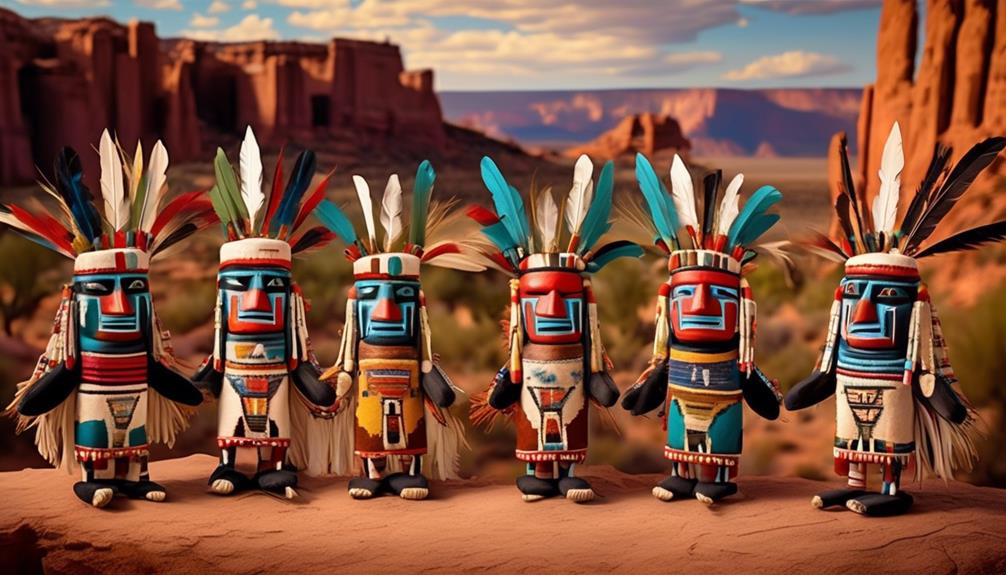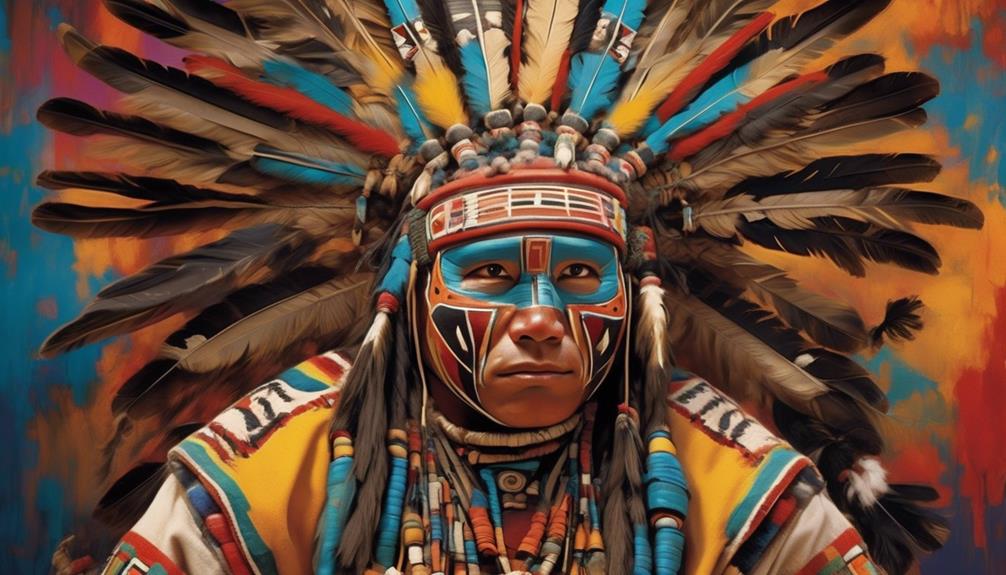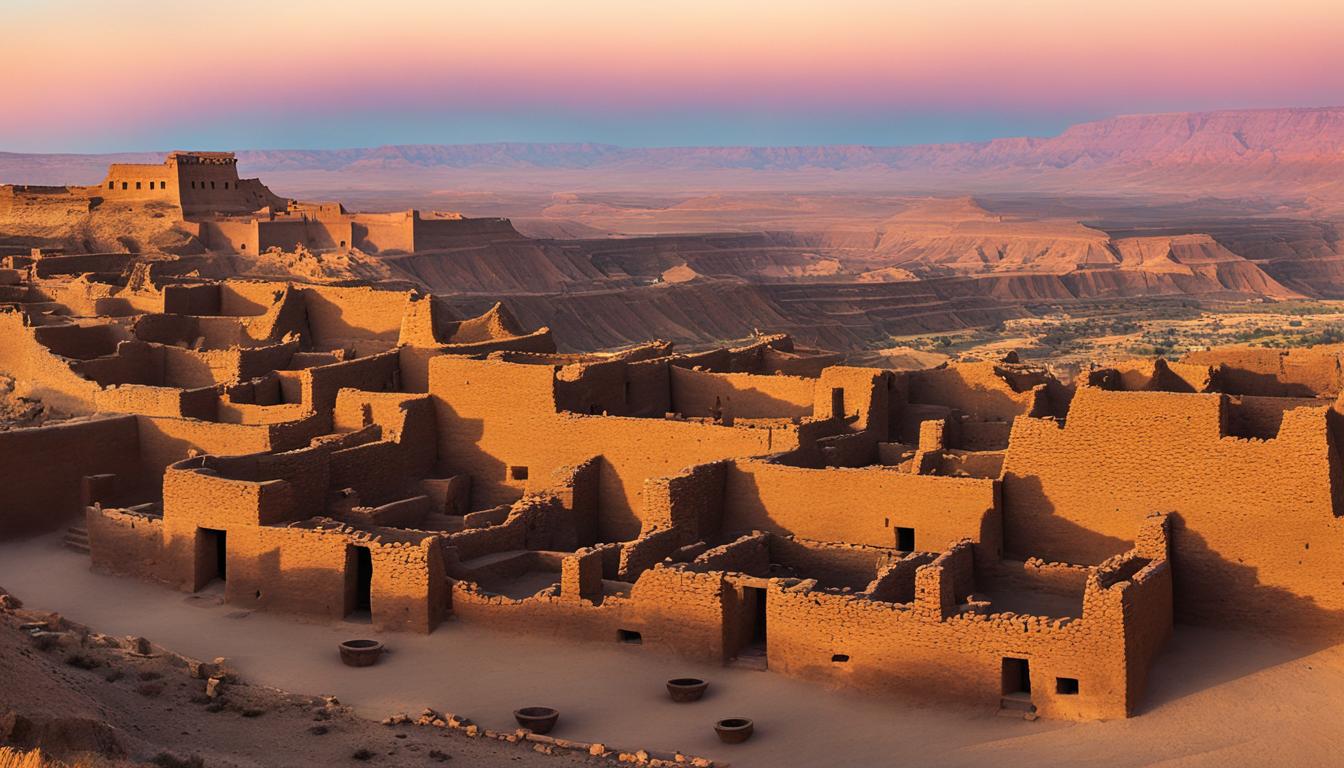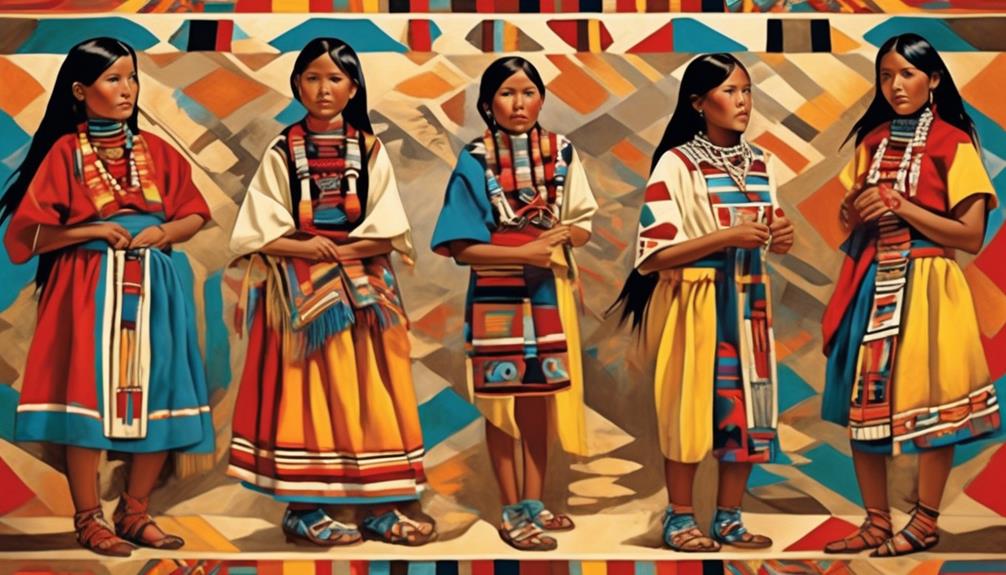The Hopi Tribe, located in the arid landscapes of present-day Arizona, has a rich history shaped by its natural surroundings.
With an average elevation of 6,300 feet, the Hopi reservation spans approximately 1.5 million acres, making it one of the largest in the United States.
The impact of such a unique landscape on the tribe's way of life is profound, touching on their agricultural practices, settlement patterns, spiritual beliefs, and social organization.
Understanding the intricate relationship between the Hopi people and their environment offers a fascinating insight into the complexities of their culture and traditions.
Key Takeaways
- The arid desert landscape and mesas of northeastern Arizona posed challenges for the Hopi Tribe in cultivating crops and obtaining water, leading to the development of resilient agricultural techniques and sophisticated irrigation systems.
- The strategic location of villages on elevated mesas allowed the Hopi Tribe to effectively harness scarce water resources, provide natural defense against intruders, and facilitate trade and cultural exchange with neighboring tribes.
- The Hopi Tribe incorporated geographical features into their spiritual beliefs, considering sacred landscapes such as mountains, springs, and mesas. They located ceremonial sites based on natural features and believed in cosmological connections between the landscape and the spiritual realm.
- The Hopi Tribe's social organization included three primary mesas housing multiple villages, division into kinship-based clans, and each village serving as a hub for specific ceremonial practices and governance. This promoted cooperation, interdependence, communal responsibility, and the sustaining of cultural heritage.
Geographic Location of the Hopi Tribe
The Hopi Tribe is situated in the northeastern region of Arizona, characterized by its arid desert landscape and stunning mesas. This geographic location has greatly influenced the environmental adaptations of the Hopi people. The tribe has ingeniously utilized natural resources such as clay for pottery and sandstone for construction, reflecting their deep understanding of the land they inhabit. The arid climate has led to the development of sophisticated irrigation systems, allowing the Hopi to cultivate maize, beans, and squash in this challenging environment.
Furthermore, the location of the Hopi Tribe has also shaped their interactions with neighboring tribes. Situated at the crossroads of trade routes, the Hopi engaged in extensive trade with surrounding communities, exchanging their unique crafts and agricultural products for essential goods such as cotton and turquoise. This geographical position not only facilitated trade but also exposed the Hopi to diverse cultural influences, enriching their own traditions.
In understanding the geographic location of the Hopi Tribe, one appreciates the intricate relationship between the land, environmental adaptations, trade routes, and the cultural exchange with neighboring tribes.
Influence on Agricultural Practices

Situated amidst the arid desert landscape of northeastern Arizona, the geographic location of the Hopi Tribe has profoundly influenced our agricultural practices, shaping our intricate methods of cultivating maize, beans, and squash in this challenging environment.
The combination of crops and climate has necessitated the development of resilient agricultural techniques to ensure the survival of our community. Our ancestors ingeniously devised irrigation techniques and methods that efficiently utilize the scarce water sources available in this arid region. These techniques include the construction of terraced fields to capture and retain rainwater, as well as the implementation of sophisticated underground channels to redirect and conserve precious water for our crops.
Comparatively, these methods have allowed us to sustainably cultivate our traditional crops in an environment where water is scarce and unpredictable. By understanding the land and climate, we've been able to adapt and thrive, embodying our deep respect for the Earth and our commitment to sustainable, community-serving agricultural practices.
Impact on Settlement Patterns
Nestled within this rugged terrain, our tribe's settlement patterns are a testament to the enduring connection between our people and the land, reflecting our adaptability and resourcefulness in the face of geographical challenges.
The availability of resources, such as water and arable land, profoundly influenced where our settlements were established. Our environmental adaptation is evident in the strategic location of our villages on elevated mesas, which allowed us to harness scarce water resources more effectively and provided natural defense against intruders. This adaptability also enabled us to cultivate crops in the arid environment, showcasing our ability to thrive in harmony with the land.
Furthermore, the geography shaped our trade routes and interactions with neighboring tribes. The proximity to other tribes, such as the Navajo and Zuni, facilitated trade and cultural exchange, enriching our way of life. Our settlements served as focal points for these interactions, fostering mutual cooperation and peaceful coexistence. The strategic placement of our villages along trade routes allowed us to engage in beneficial exchanges, enhancing our access to essential resources and fostering relationships with neighboring tribes.
In essence, our settlement patterns reflect the harmonious coexistence between our people and the land, showcasing our resilience, adaptability, and interconnectedness with neighboring tribes.
Role in Spiritual Beliefs

Incorporating geographical features into our spiritual beliefs has deeply influenced our understanding of the natural world and our place within it. Our spiritual practices are intricately connected to the land, shaping our ceremonies, traditions, and worldview.
- Sacred Landscapes: Our spiritual beliefs are closely tied to specific geographical features such as mountains, springs, and mesas. These natural elements are considered sacred and are integral to our ceremonial practices, symbolizing the presence of our ancestors and spiritual deities.
- Ceremonial Sites: The geography of our homeland has determined the location of our ceremonial sites. These sites are carefully chosen based on natural features that are believed to hold spiritual significance, such as the position of the sun, wind direction, and proximity to water sources.
- Cosmological Connections: The landscape influences our cosmological understanding and connection to the spiritual realm. The topography of the land is believed to mirror the structure of the spiritual world, shaping our rituals and understanding of the divine.
Our spiritual beliefs are deeply intertwined with the geographic features of our ancestral land, shaping our identity and fostering a profound connection to the natural world.
Connection to Social Organization
Deeply rooted in our cultural traditions, the geographical layout of our homeland has played a pivotal role in shaping the social organization of the Hopi tribe. Our social structure is interconnected with the physical layout of our villages, which are situated on three primary mesas in northeastern Arizona. Each mesa is home to several villages, and this spatial arrangement reflects the historical division of the Hopi people into kinship-based clans. The community dynamics are deeply influenced by this spatial organization, as each village serves as a hub for specific ceremonial practices, governance, and social activities.
| Mesa | Villages | Key Features |
|---|---|---|
| First Mesa | Walpi, Sichomovi, Tewa | Traditional governance, agricultural practices |
| Second Mesa | Shongopovi, Mishongnovi, Shungopavi, Shipaulovi | Ceremonial activities, religious leadership |
| Third Mesa | Hotevilla, Oraibi, Bacavi, Kykotsmovi | Agricultural expertise, artisanship, religious ceremonies |
This spatial distribution has fostered strong bonds within and between villages, contributing to our cohesive social structure. The distinct roles of each village within the tribe's social organization promote cooperation, interdependence, and a sense of communal responsibility. This unique interplay between geography and social organization has sustained our cultural heritage and continues to shape our community dynamics to this day.
Frequently Asked Questions
What Specific Geographical Features of the Hopi Tribe's Location Influenced Their Daily Lives and Activities?
Geographical terrain greatly influenced the Hopi Tribe's daily lives and activities. The rugged landscape shaped our agricultural techniques, as we developed terraced farming to optimize water usage.
Traditional clothing served both practical and cultural purposes, reflecting our connection to the land.
Hunting practices were adapted to the availability of game in the area.
How Did the Geography of the Hopi Tribe's Location Impact Their Trade and Interactions With Neighboring Tribes?
Trade routes and interactions with neighboring tribes were profoundly shaped by the geography of the Hopi tribe's location. Our access to specific resources and proximity to other tribes affected our trade patterns and cultural exchange.
Geographical barriers like canyons and mesas influenced the routes we took to trade with neighboring tribes. These natural features also impacted the ease and frequency of our interactions, shaping the nature of our relationships with nearby communities.
What Role Did the Specific Climate and Weather Patterns of the Hopi Tribe's Location Play in Shaping Their Agricultural Practices?
The specific climate and weather patterns of the Hopi tribe's location significantly shaped our agricultural techniques.
The geographical influences, including arid conditions and scarce rainfall, dictated our daily activities.
We devised innovative methods to harness water for farming, such as constructing irrigation systems and cultivating drought-resistant crops.
These practices allowed us to sustain ourselves and thrive in the challenging environment, fostering a deep connection between our culture and the land.
How Did the Landscape of the Hopi Tribe's Location Affect Their Traditional Building Materials and Construction Techniques?
Like a potter shaping clay, the landscape of the Hopi Tribe's location profoundly influenced our traditional building materials and construction techniques.
The scarcity of natural resources and the challenging geographical features forced us to innovate and develop unique methods for constructing our dwellings.
We adapted our techniques to harmonize with the environment, weaving our daily lives, trade interactions, and spiritual ceremonies into the very fabric of our homes.
What Natural Resources Unique to the Hopi Tribe's Geographic Area Were Utilized in Their Spiritual Ceremonies and Rituals?
Geological formations in the Hopi tribe's geographic area hold spiritual significance for us.
Natural resources like clay and sandstone were crucial for ceremonial use, shaping our religious practices.
Our ceremonies relied on these resources to create pottery, kachina dolls, and adobe structures, connecting us to the land and our ancestors.
The unique landscape of the Hopi tribe provided the materials and inspiration for our sacred rituals, fostering a deep spiritual connection to the earth.
Conclusion
In conclusion, the geography of the Hopi tribe has shaped every aspect of their lives. From their agricultural practices to their settlement patterns and spiritual beliefs, the land has been their constant companion. It has influenced their way of life and connected them to their ancestors. The Hopi people have thrived in harmony with their environment. They have created a unique and enduring culture that continues to be shaped by the land they call home.
Mary is a passionate writer who brings creativity and a fresh perspective to our team. Her words have the power to captivate and inspire, making her an essential contributor to our content. Mary’s commitment to storytelling and dedication to promoting Indigenous culture ensures that her work touches the hearts of our readers. We’re fortunate to have her as part of our team.










